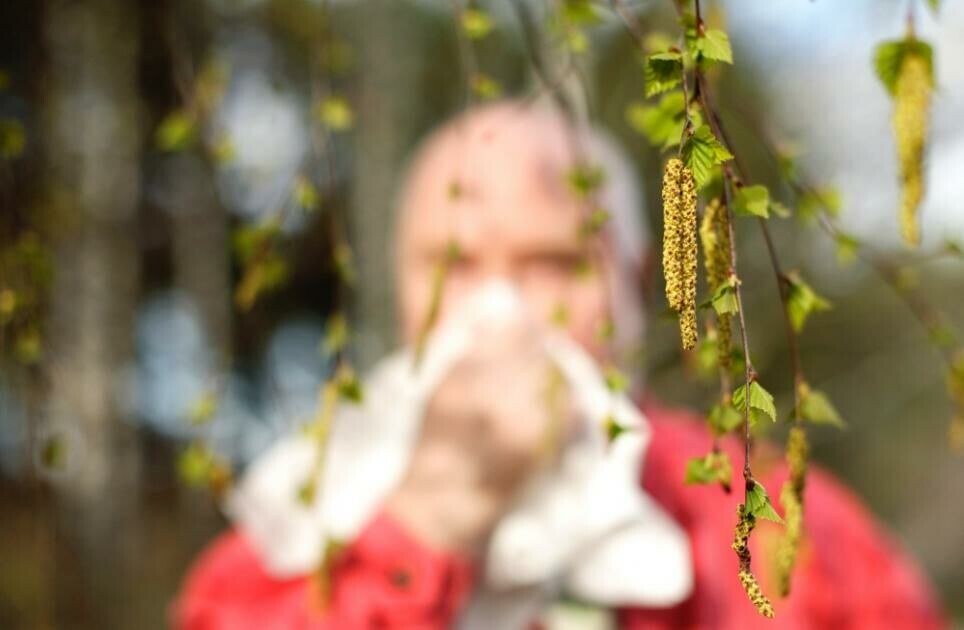THIS ARTICLE/PRESS RELEASE IS PAID FOR AND PRESENTED BY University of Oslo - read more

New methods in pollen identification
Machine learning and DNA-barcoding can be used for pollen surveillance for allergic people, and keep track of invading species.
Did you know that the pollen warning given every spring is a result of hours and hours counting microscopic pollen? Experts spend hours in front of the microscope manually counting and identifying pollen samples so that allergic people can take their medication in time before the symptoms break out. The problem is, however, that for many species the pollen is so similar that even experts can't tell them apart.
New methods give hope that the identification can partly be done automatically in the future. This can save a lot of time and money, while also highly improving the specificity of pollen identification. In addition, the new methods prove useful in other fields as well, such as paleontology.
From fossilized pollen to machine learning
Marcel Polling is a palynologist — a specialist in microscopic identification of pollen and other microscopically small organisms. This niche of knowledge can be used for identifying and counting pollen for pollen alerts, but also in describing the past. The latter was Polling’s work for five years, identifying fossil pollen in ancient rock samples. While gazing at the minuscule dots he kept thinking that there must be more effective ways of doing this.
So far, computers have not proven to be very good at recognizing different types of pollen, but algorithms keep improving all the time. In his PhD at the Natural History Museum of Oslo and Naturalis Biodiversity Center in the Netherlands, he wanted to find out if it is possible to use machine learning algorithms to teach the computers to identify highly similar pollen that cannot be distinguished by palynologists. If he succeeded, the monitoring of allergenic pollen could become a lot more specific.
Today samples are taken by a device containing a tape where the airborne pollen attach. This tape is then analyzed by pollen experts. According to Polling it takes years of experience to become good at the task. There are over thousand different grass species, but the pollen looks the same. This is a problem in the pollen identification.
“There are loads of families where this problem is occurring,” says Polling. “Instead of just identifying the pollen as grass I would like to be able to tell the species. As some species are much more allergenic than others.”
Allergenic nettles moving towards the north
Polling therefore conducted a case study on the nettle family. The stinging nettle that is native to the Netherlands is non-allergenic. The pollen from this nettle looks almost exactly like a highly allergenic species from the same family (pellitory) found in the Mediterranean area. The latter is spreading due to a warmer climate. It thrives in cities where it's rocky, damp, and hot. Researchers fear that it is coming northwards, and it will be useful to be able to warn allergic people in the future as it is one of the main allergens of the Mediterranean.
Samples were collected from the pollen of the non-allergenic nettle in the Netherlands and from the allergenic pellitory in Spain and the Netherlands. The computers were given thousands of samples where the species was known, and then the model was tested on real air samples containing both pollen types.
This method worked very well for the nettle family and will allow palynologists to identify and track pollen from the invasive pellitory, but when the researchers tried this technique with grass pollen it did not work since these looked too much alike. Therefore, Polling wanted to try another way of species identification that has improved a lot over the past few years: DNA metabarcoding.
DNA-identification of grass
In short, this method means that you find a species-specific part of the DNA and use it as a barcode. Like the barcode scanner in a grocery shop that can recognize thousands of different groceries, a DNA metabarcode can be used to identify the species from a sample containing many different species, given that the barcode is specific enough. Which part of the DNA is most optimal for this operation is not always known, and a lot of work lies behind optimizing which “barcode” to use.
In this case Polling used samples that were already manually identified and part of a pollen monitoring program. He used the DNA metabarcoding technique to test if he would be able to identify more species and whether the same quantitative results as the experts could be obtained. Polling tried two different DNA regions as 'barcode' to see if they would give different outcome. One of the barcodes was long, and the other one was short. There are pro´s and con´s with both of these:
“The short barcode will not let you distinguish species, but on the other hand you will always get DNA out even if the quality is quite poor. With a longer DNA barcode you need high quality DNA, but you can almost always get to the species level,” says Polling.
The results showed that with the long barcode the researchers were able to identify 170 species. The manual microscope method could only identify 20 different pollen types and none to the species level. This gives hope that it will be possible to monitor pollen more effectively and at an exact species level. There is only one problem: The DNA metabarcode will not tell you the amount of pollen, only whether the species is present or not.
Abundance in crucial
What level of pollen in the air will make you feel sick? With the manual pollen monitoring program, it is possible to count the amount of pollen. To use the DNA method for allergy alerts, you need to say something about the abundance.
“When we tried the method, we were able to get the relative abundance of the species, and this showed a high correlation with what we found in the microscope, this is a very important finding,” says Polling.
Since the DNA-method only gave relative abundance, the microscope cannot be abandoned yet. Polling hopes that in the future it will be possible to use the DNA technique to also count the absolute abundance. He adds that the DNA method can be used to monitor other aspects such as the presence of an invasive and planted species. With climate change new species are likely to arrive, and old ones might disappear. With molecular pollen monitoring it will be easier to keep track of these changes and the influence this will have on pollen allergies, according to Polling.
References:
Marcel Polling et.al.: Neural networks for increased accuracy of allergenic pollen monitoring. Scientific Reports, 2021.
Marcel Polling et.al.: DNA metabarcoding using nrITS2 provides highly qualitative and quantitative results for airborne pollen monitoring. Science of The Total Environment, 2022.
See more content from the University of Oslo:
-
A researcher has listened to 480 versions of Hitler's favourite music. This is what he found
-
Researcher: "AI weakens our judgement"
-
New, worrying trend among incels, according to researcher
-
Ship’s logs have shaped our understanding of the sea
-
New study: The dilemma of copyright in the Global South
-
How your lifestyle affects your risk of bowel cancer





































